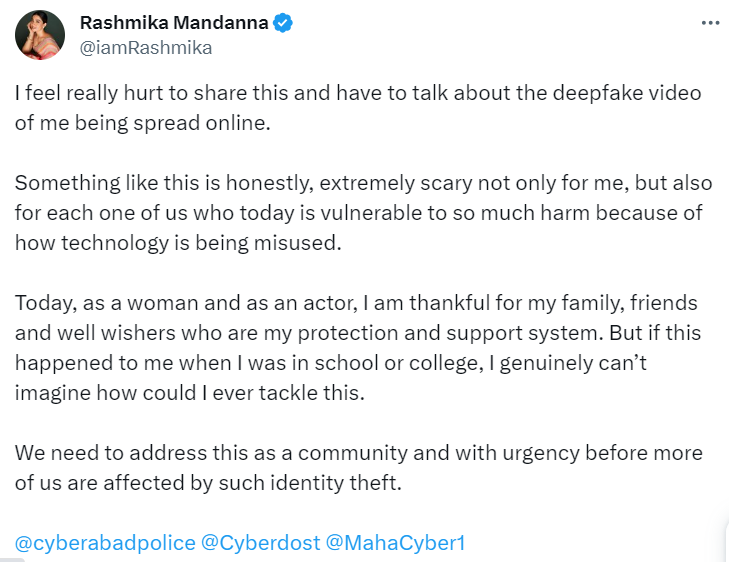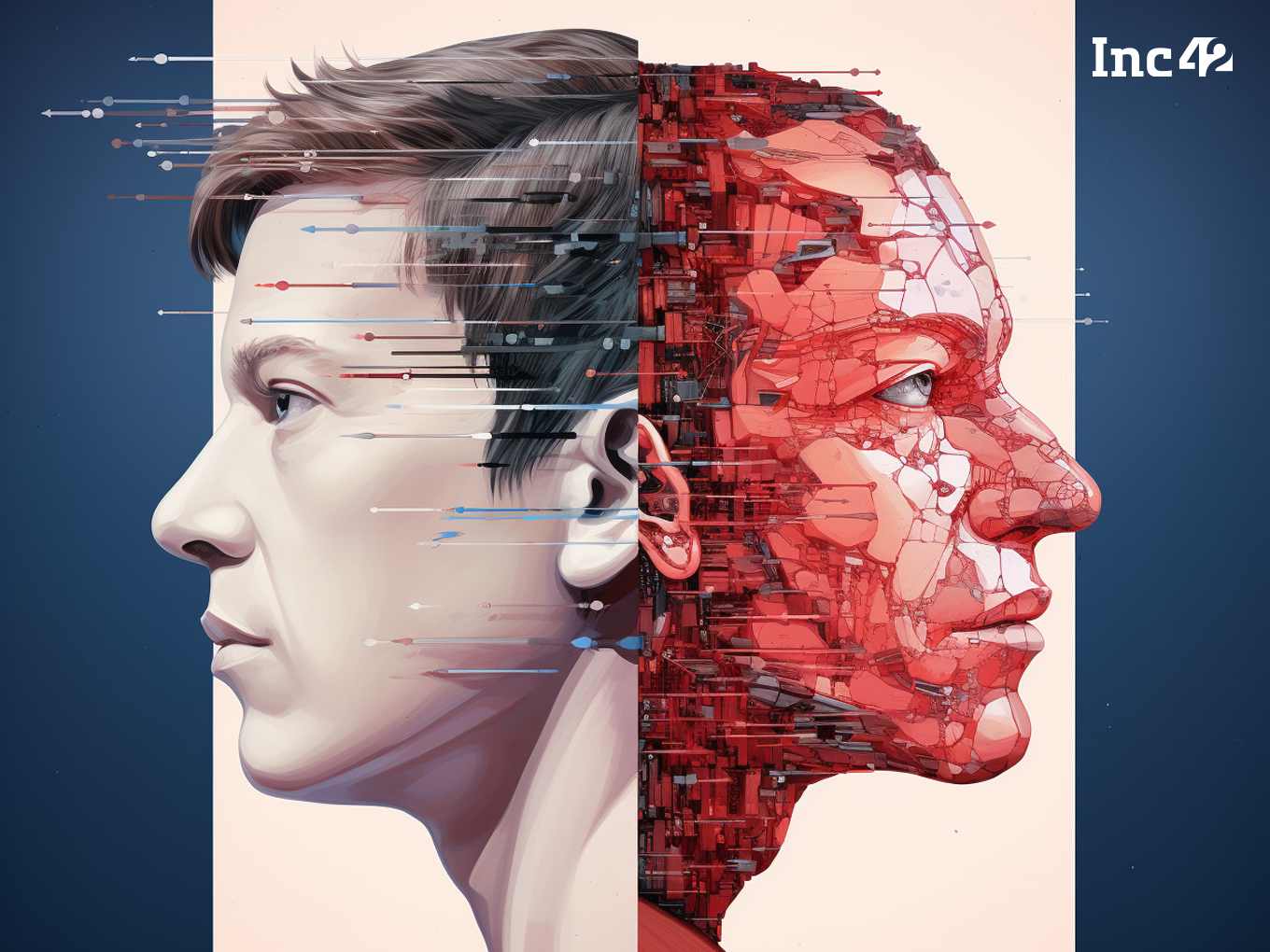Just this week, deepfake images and videos of actors Rashmika Mandanna and Katrina Kaif as well as Sara Tendulkar made their way online
The impact of these episodes has been such that a majority of us have been astounded by how realistic these deepfakes were
Going beyond what has happened in the last few days, we have endeavoured to explain deepfakes in the simplest way possible, so that you can be more alert and selective in consuming information online
Remember the 2018 video of Barack Obama calling Donald Trump a ‘complete dipshit’ or the 2019 video supposedly featuring Mark Zuckerberg claiming to have ‘total control of billions of people’s stolen data’?
Well, while those videos were eventually debunked as shams, millions of similar videos and images are doing rounds on the internet today, blurring the lines between what’s real and what’s fake.
What’s even more concerning is the fact that the proliferation and constant evolution of artificial intelligence (AI) has only made matters worse for the world. This is because any piece of original information or data can now be converted into a deepfake to spread misinformation.
All in all, the recent advancements in the arena of generative AI have only heightened these concerns as internet users face the grim reality of misinformation and fake content online.
The debate on how some bad apples of society are using AI to spread sham information took centre stage after AI-generated deepfake videos of two Indian actors sent netizens into a tizzy.

At first, a video featuring what looked like actor Rashmika Mandanna made the rounds on the internet. Hot on the heels of this video getting viral, another deepfake video showcasing the face of Katrina Kaif started doing rounds on the internet. If this was not enough, a morphed image of Sachin Tendulkar’s daughter Sara Tendulkar made its way online.
The impact of these episodes has been such that a majority of us have been astounded by how realistic these deepfakes look. While these instances are only as childish as they can get, AI-generated fake video and audio content has the potential to even trigger a riot and spread disharmony in a country as diverse as India.
Moving on, while Mandanna termed the experience ‘extremely scary’, Amitabh Bachchan called for legal action against those behind such shenanigans.

Meanwhile, going beyond what has happened in the last few days, we have endeavoured to explain deepfakes in the simplest way possible, so that you can be more alert and selective in consuming information online.
What Is A Deepfake?
A portmanteau of the words ‘deep learning’ and ‘fake’, deepfakes are a byproduct of AI and machine learning. These technologies make use of readily accessible images (facial data) and audio clips to craft artificial, yet highly lifelike, videos or images featuring an individual in scenarios they never actually experienced.
Most deepfakes are made on high-end computers that deploy power graphics cards to process and create replicas of original content. But, how are they made?
Deepfakes often utilise the Generative Adversarial Networks GAN) architecture, which pits two AI algorithms against each other. While one (generator network) creates a manipulated image, another one (discriminator) is tasked with detecting whether the generated image is fake or not. The process is repeated till the latter cannot distinguish between the real and the false.
For deepfake videos, the cycle has to be repeated for each frame of the video to ensure consistency and more realistic attributes. High-quality deepfakes are generated when more data is fed to AI. This is easily available in the case of public figures and celebrities who have tons of such data available online in the form of photos, interviews, and speeches, making the algorithm even better.
Why Are Deepfakes Contentious?
While privacy invasion has been flagged as a major flaw of synthetic images and videos, stakes are much higher for public figures whose reputation could take a major hit on account of manipulated content.
However, the biggest issue appears to be misinformation. Deepfakes can be used to spread false information, which could spread political or social chaos.
This has been evident in the Israel-Gaza conflict where both sides have deployed AI deepfakes to generate manipulated images to sway public opinion.
Besides, deepfakes also pose a major threat to national security. While there is no concrete way to differentiate deepfakes from real images, synthetic videos could wreak havoc and cause mass hysteria by the time their veracity can be established.
Many experts have also flagged that deepfakes can lead to identity theft and fraud.
Alarm Bells Ringing In Govt Corridors
The proliferation of deepfakes has also raised concerns in various quarters of the government. Such has been the chaos around the matter that it has even prompted the Minister of State (MoS) for Electronics and Information Technology Rajeev Chandrasekhar to closely look into the matter.
Terming deepfakes a major violation of law, he said that social media platforms were legally obligated to prevent the spread of misinformation and take down such content within 36 hours.
“Deepfakes are a major violation and harm women in particular. Our Government takes the responsibility of safety & trust of all nagriks very very seriously, and more so about our children and women who are targeted by such content,” MoS Chandrasekhar said.
While deepfakes specifically are not covered under the ambit of any Indian laws, the Information Technology Act provides certain protections for a person’s privacy and puts the onus of curbing the spread of such content on digital intermediaries.
If a video is made without the explicit permission of an individual, the said person can approach courts and file their grievances and cases under various provisions of the Indian Penal Code (IPC).
While Section 66 D of the IT Act pertains to punishment for cheating by personation by using a ‘computer resource’, Sections 499 and 500 of the IPC provide recourse in the case of defamation. The former entails a prison of up to three years and a fine of up to INR 1 Lakh.
For legal cases, users have to prove the element of falsity, harm and negligence by the content creator to get relief in the matter.
Deepfakes could also be covered under the ambit of consumer protection laws in instances where such synthetic content is used for fraudulent purposes and harming consumers. The IT Act also has recourse for deepfake videos that are generated by employing illicit methods such as hacking or data theft.
The Blurred Lines Of Reality & Fiction
While there is no sure-shot way to identify a high-quality deepfake, online users can monitor inconsistencies in facial expressions and lip sync errors to steer clear of such content. Besides, users can also look for blurry edges around a person featured in the video or audio anomalies to ascertain the veracity of such synthetic content.
Higher digital literacy and prompt action against those deploying deepfakes for malicious reasons can also help build public confidence.
While much has to be done, efforts are underway to develop sophisticated deepfake detection tools. While Indian authorities are actively looking at the new technology, more needs to be done to devise a robust legal framework to govern the creation and dissemination of deepfake content.
As generative AI tools become more accessible and such content floods online, it remains to be seen what the future heralds for the Indian digital landscape. While the concerns of the deepfake technology cannot be ignored, a proactive approach is necessary to clamp down on such content to ensure that Indian denizens continue to feel safe online.
























